Grilled mushroom caps with a rustic herb sauce is one of my favorite wine cap recipes. The original version cooked the mushroom caps directly on the coals, but you can use a regular grill. Read on and I'll explain.
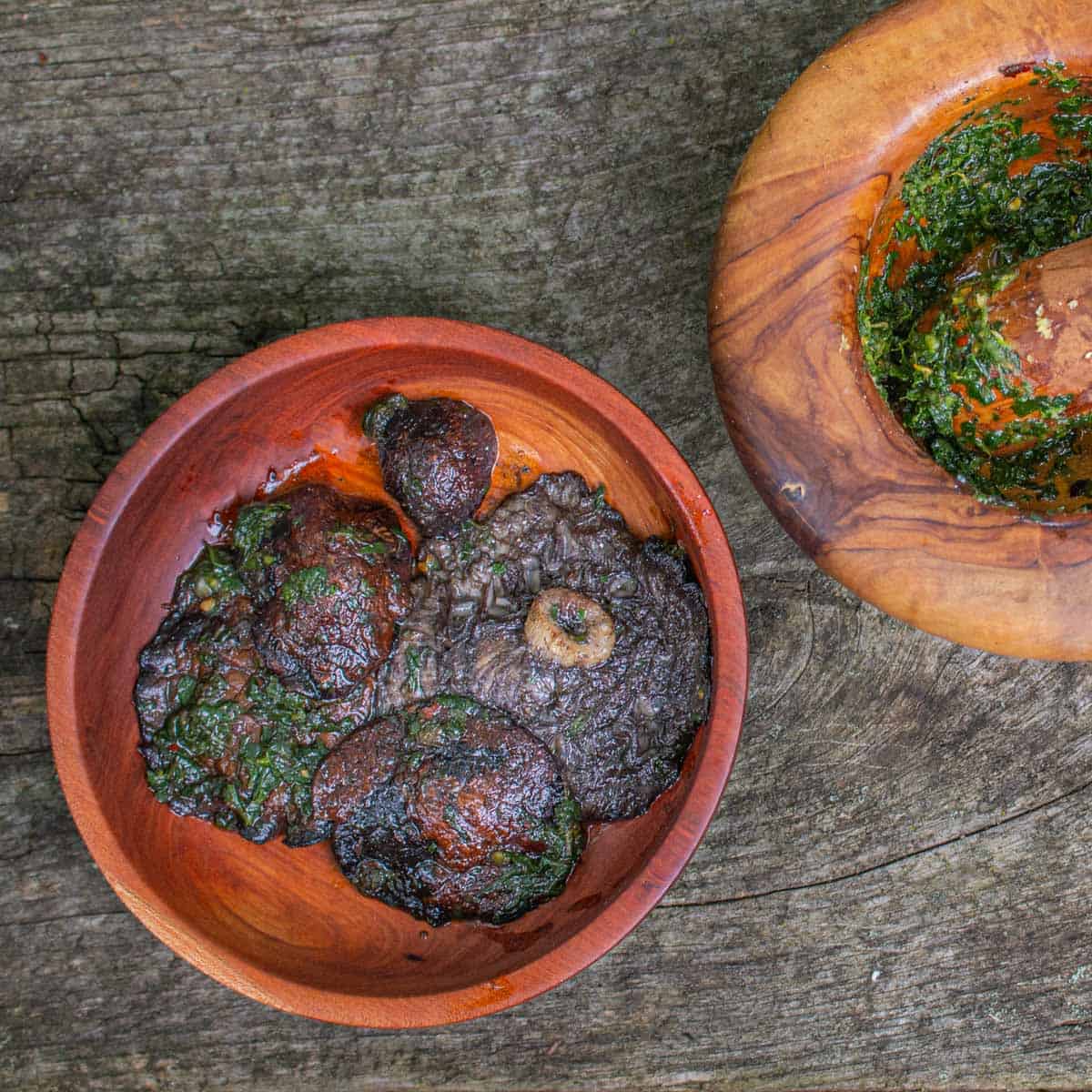
Use fresh mushrooms with big caps
For the best result, your mushrooms should be pristine and fresh. You're cooking whole caps here, so there's no hiding if they have a bunch of intruders or larvae.
The fire needs to be wood, not charcoal, because the wood is part of the seasoning--the few intense moments the caps are licked by the searing coals imparts flavor. It's a flavor of smoke, fire, and something primal, I mean, is there anything more primitive than cooking without a grill grate, and instructions that tell you to "dust the ash" off the mushroom caps before you eat them?
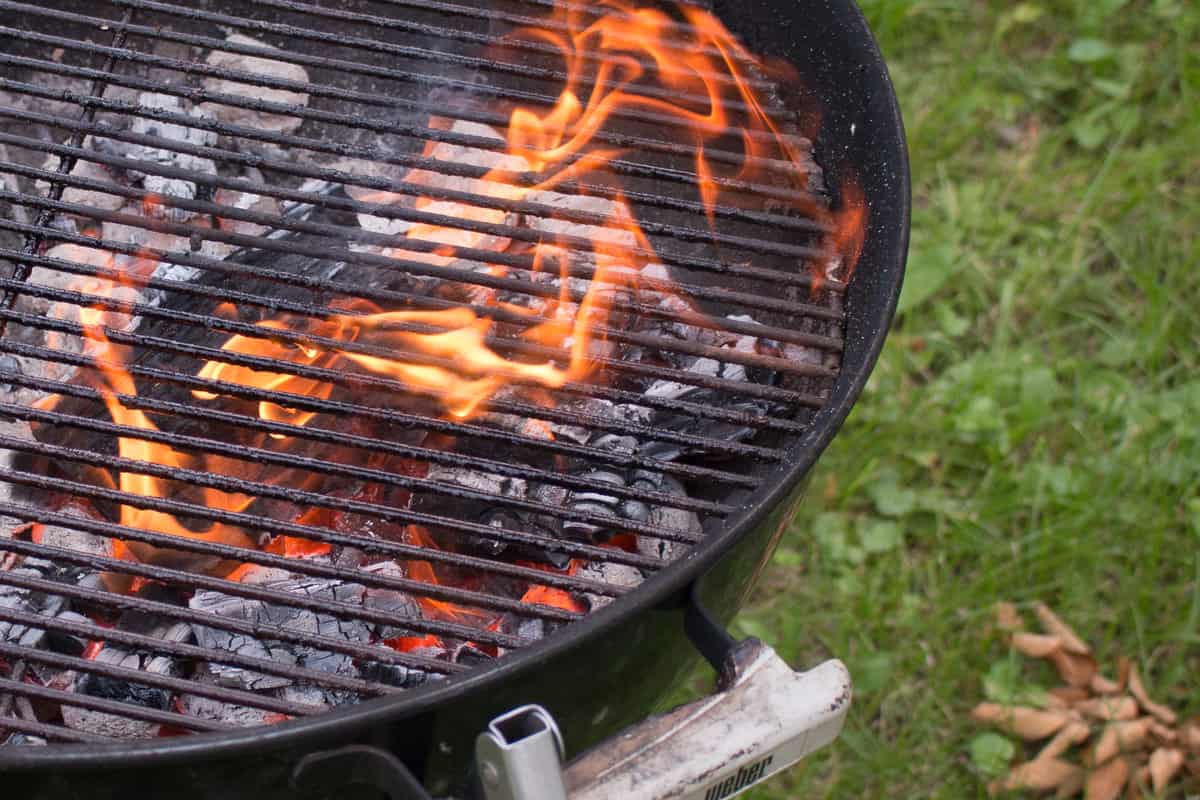
Mushroom Literature
This is a really fun dish, relatively easy to make, and is probably on some crazy-expensive tasting menu somewhere in one variation or another. I read about a similar preparation in a new book I've been reading called Honey From a Weed by Patience Gray, and it's part of what gave me the idea here.
I've read hundreds of cookbooks, but this one is really something. It's a journey of the authors travels accompanying her husband (a stone worker) through Spain, France, and Italy. She delves into regional cooking like no one I've ever read, and, refers to the hard to find ingredients, the plants, mushrooms, and vegetables with colloquial/common names, and Latin binomials.
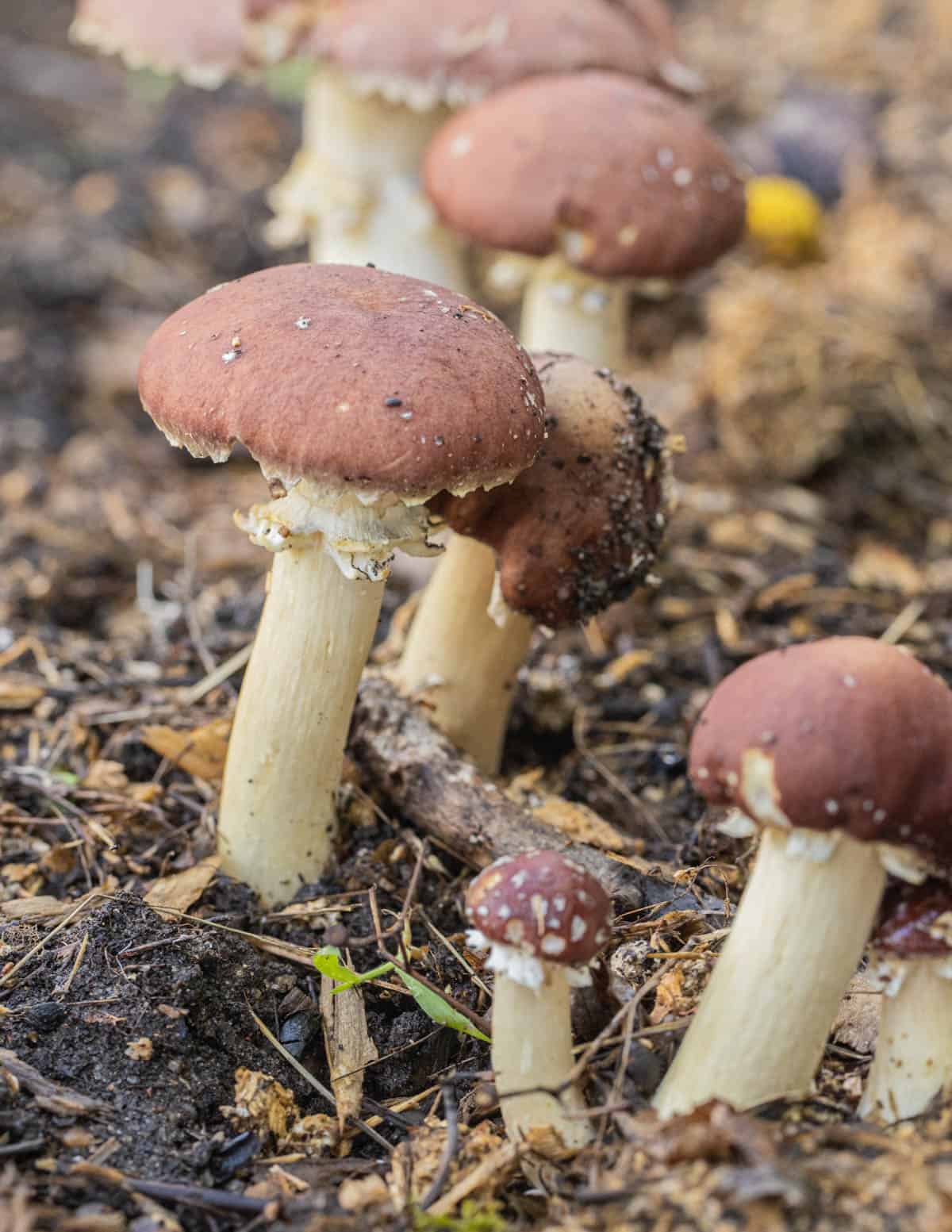
When I snagged a few wine caps (Stropharia rugosoannulata), or rather saved them from my new friend's woodchip pile this week as he was out of town, I thought I'd try out one of the methods in the mushroom section.
How to Make it
Here's the jist: you take some mushroom caps, and only caps (they need to be flat), then cook/grill them directly on wood embers. After they're done you brush them, toss in a rustic garlic-herb sauce pounded in a mortar and pestle with good olive oil, and eat.
It's a great way to celebrate scoring some wild mushrooms with big, fat caps, which are not as easy to find as non-fungus hunters might think, and that brings us to an important point about cooking shrooms like this.
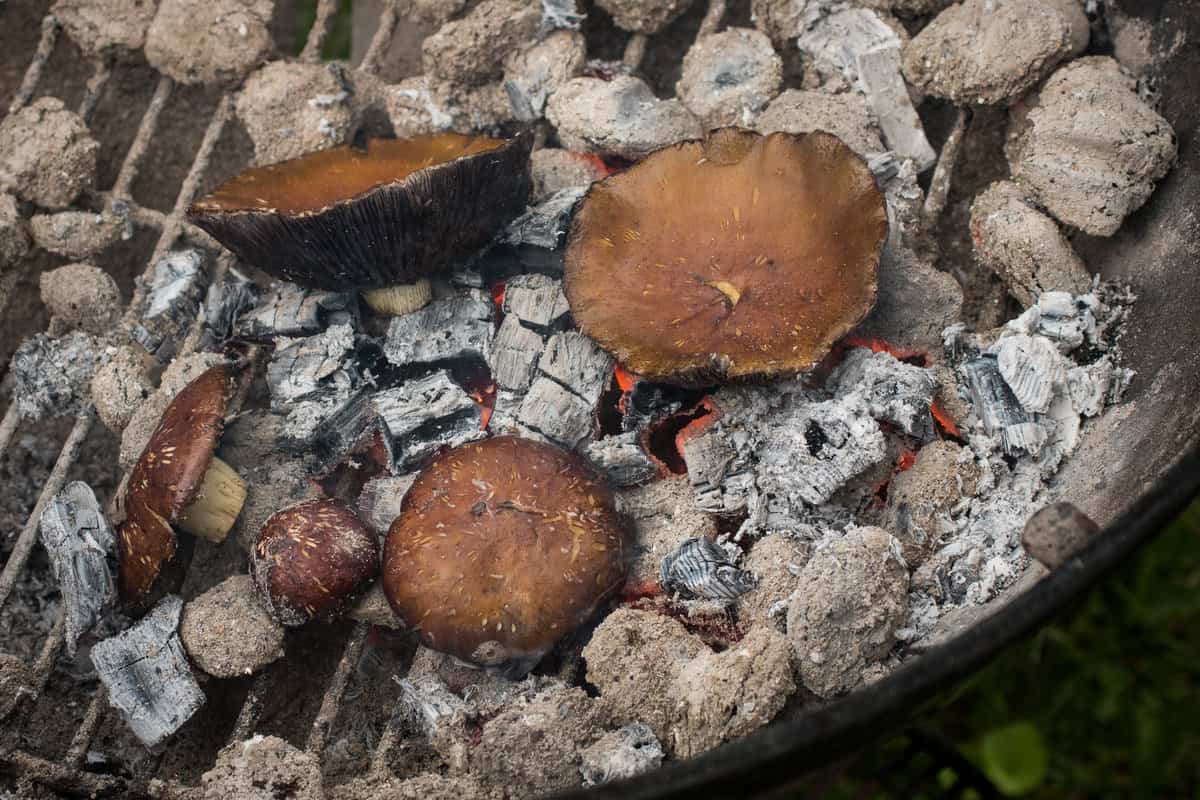
Be careful undercooking, or quickly cooking wild mushrooms
Foraging mushrooms with big caps will probably mean you're venturing into mid-level skill mushrooms, which, to me, basically means a larger array of gilled mushrooms.
Of course boletes (mushrooms with pores instead of gills) can have big caps too, but if you pick boletes, you know finding them bug-free can be tough, and, at least near me, the ones with high-bug resistance often need long cooking or dehydrating, and wouldn't make good candidates for quick cooking, like Leccinum species.
There's some slightly easier candidates where I live like Megacollybia rodmani or Pluteus cervinus and pestatus, and they would be great, as both are relatively easy to ID, and are pretty easy on the stomach.
It goes without saying too, that big slabs of polypore like chicken of the woods would be good like this, watched carefully so they cook and don't char, or wrapped in leaves. I'm probably going to try it with the next chicken of the woods I find, or a giant hedgehog if I get the chance to hunt with a particular friend of mine this year.
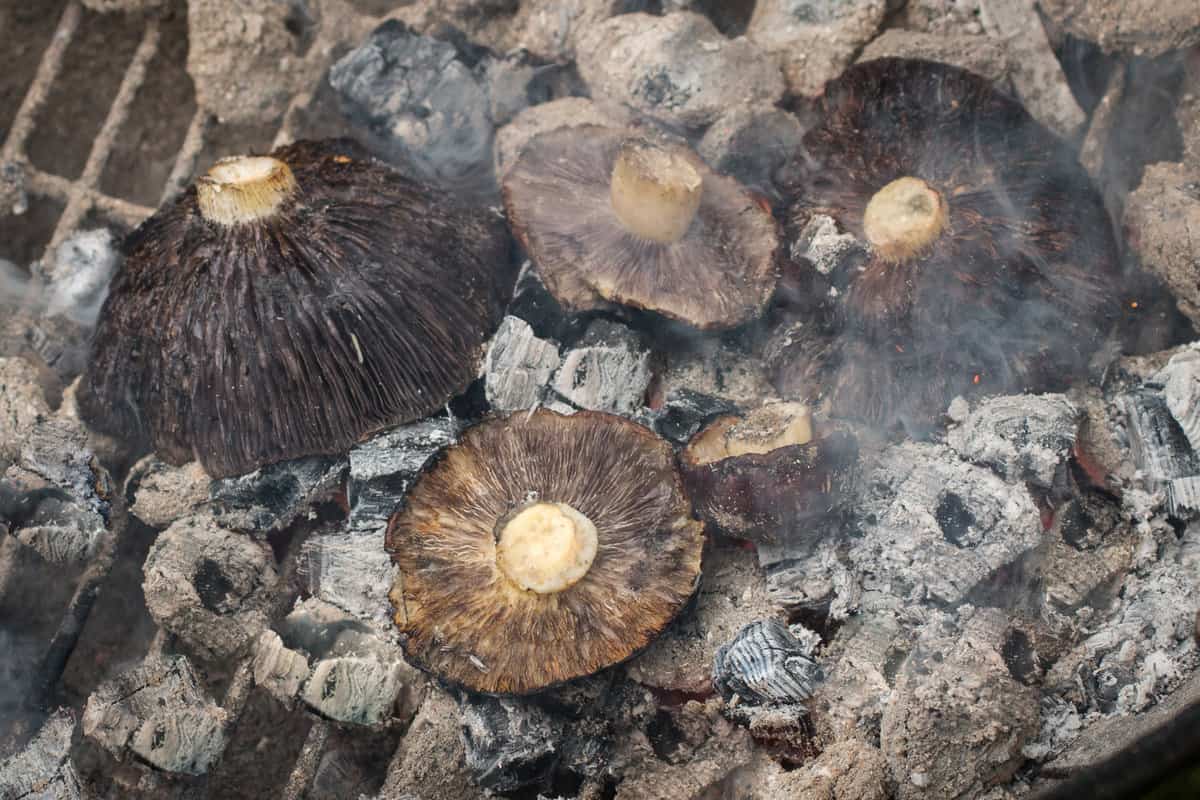
Anyway, that was a drawn out way of saying that not all wild mushrooms are good for quick cooking like this, which is why I thought of this method when I was picking the Stropharia/wine caps.
Wine caps are a widely cultivated mushroom, and cultivated mushrooms, as a general rule, have a much lower incidence of causing any sort of gastric upset than do their wild cousins (morels for example) that mess with people's tummies every year, for one reason or another.
So, if your on the fence about an ID, or are eating something for the first time, this is not the recipe for you. If you have some big mushroom caps, cultivated, wild or otherwise that you want to do something new with, and you've eaten them before, it definitely is.
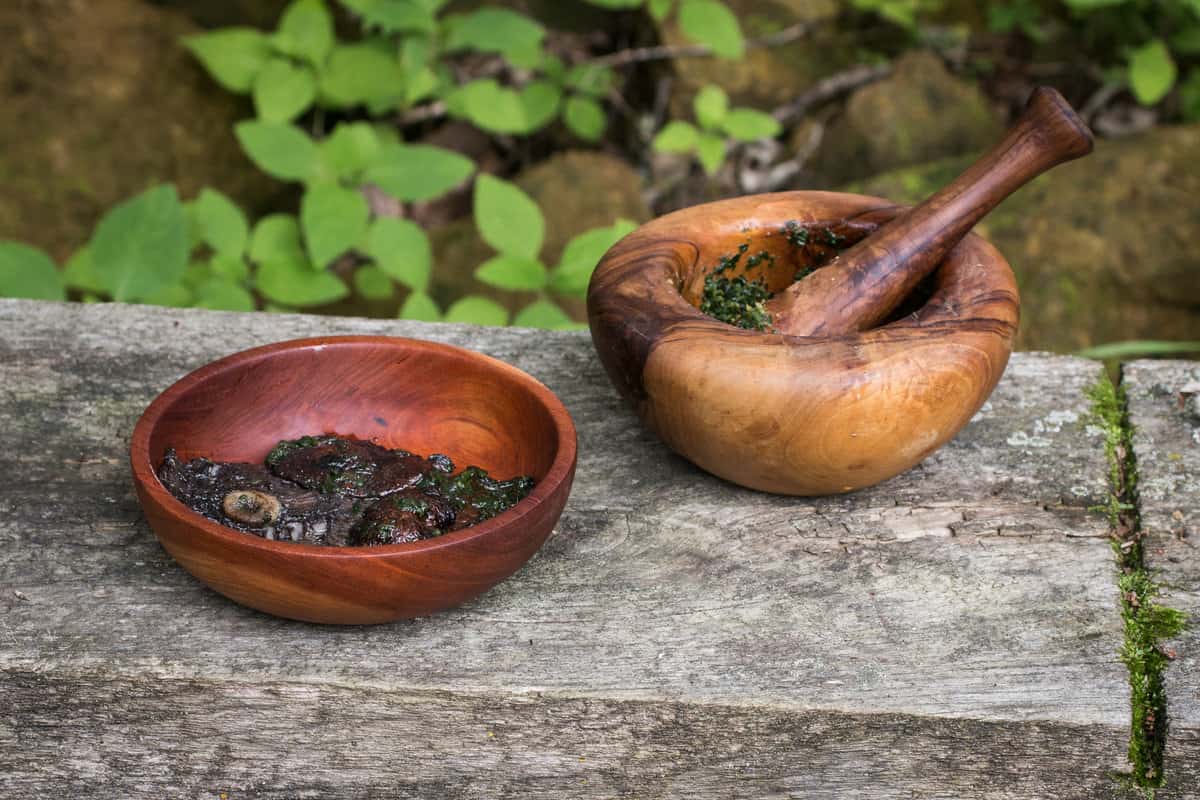
Grilled Wine Cap Mushrooms with Herb Sauce
Equipment
- 1 Grill
Ingredients
- 6-8 ounces fresh mushroom caps
- 2 loosely packed cups or 20 grams leafy herbs such as parsley, basil, cilantro or mint
- 1 small clove of garlic about 3-4 grams
- 2-3 Tablespoons really good oil like extra virgin olive oil, a tasty nut oil, etc,
- ¼-1/2 teaspoon kosher salt to taste
- 10 or so cracks of the peppermill
- Fresh lemon wedges to serve
- Firewood preferably a slow burning hardwood
Instructions
- Start a fire. While the fire is going, chop the herbs and garlic roughly, then make the sauce by pounding the garlic and herbs with the salt and pepper in a mortar and pestle or a food processor, when you get a thick paste, thin it with the oil to make a rough sauce.
- When the embers have formed, push them into a pile and make a little cooking mound. Using long tongs to preserve your fingerprints, cook the mushroom caps quickly, but thoroughly directly on the coals, moving them around to ensure they cook as even as you can.
- When the mushrooms are cooked (a minute or two) remove them from the fire, brush lightly if they're not too wilted, and toss in a bowl with the sauce to taste.
- The good part here is that ashes generally aren't gritty. I ate all of mine, and some had more ash than others: they were all fine, not a crunchy one in them. Transfer the mushrooms and their sauce to a platter and serve with lemon wedges and some additional kosher or finishing salt.

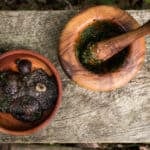
William Hunter Duncan
We grew about ten pounds of Strophoria Wine Caps this year in Minneapolis, our first attempt. Once I gauged production I expanded the beds four-fold. We are hoping next year to dry enough for the winter. I find they sometimes have an off flavor if kept in the fridge in a paper bag, so I was experimenting too with drying. I find the stems cook well cut in coins. This fall when they resume fruiting I will try this method, as we cook occasionally over a fire.
We have thirty fruit trees on our 1/6 acre lot and about 200 species of plants. We plugged oak logs with two varieties of shiitake and also lions mane, though production was low this first spring. This winter we are going to experiment with more species, including chicken of the woods, blewit, miatake and nameko. You are welcome to tour the place if you are in the neighborhood. Right now we have ripe Mesabi cherries, black and red currants, red, yellow and black cap raspberries, strawberries and mulberries, which I pick every day mostly to ferment for home-brew. The black cap raspberries are typically spot-on with timing, though they.are at least a week late this year. Hopefully this year they aren't full of maggots like they were last year, from that new fruit fly with the serrated ovipositor, D. suzuki.
Alan Bergo
Hey William! Thanks. Sounds like you have quite the food Forest. I’m actually searching for a new pal who might let me pick a few berries for a recipe I need to shoot for my book this weekend. I’ll email you.
David Griggs
Good Morning Alan,
I'll bet oyster mushrooms(Pleurotus species) would be really good cooked like this. We had a bumper crop in the Grand Rapids, Mn area. I've just been grilling them, larva and all, brushed with a bit of olive oil and hit with S & P.
They do release a fair amount of liquid on resting, and it is diving scoping it up with grilled bread or mashed potatoes....
Keep up the inspirational work, I look forward to reading your stuff every weekend.....
Alan Bergo
Thanks David. Yes, of course, each person has their personal bug threshold--more power to you. And a fat, cluster of oysters would be great, I really enjoyed this method. I'll be up in your neck of the woods soon looking for caraway. Random question: have you seen lupine or meadowsweet flowering yet? It's a weird year, everything is behind.--Alan.